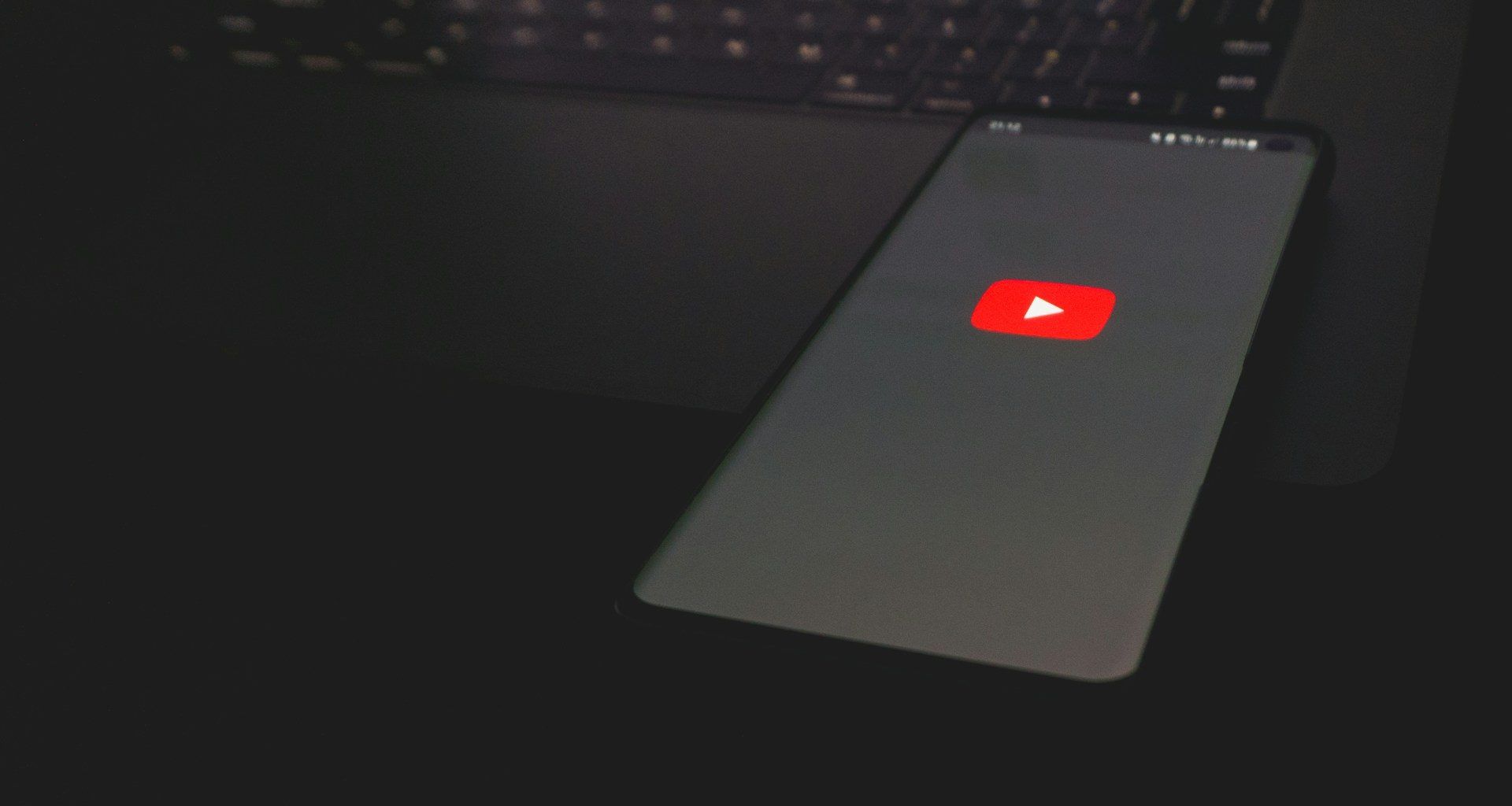YouTube Video Whitelisting is a crucial practice for content creators and rights holders who want to allow specific users to utilize their content without facing automatic copyright claims. It ensures that authorized users can use the content freely, promoting collaboration and expanding the reach of the original material. In this blog, we will delve into the concept of YouTube Video Whitelisting, its benefits, how it works, and the steps involved in the process.
Table of Contents
- What is YouTube Video Whitelisting?
- Benefits of YouTube Video Whitelisting
- How Does YouTube Video Whitelisting Work?
- Steps to Whitelist a YouTube Video
- Best Practices for YouTube Video Whitelisting
- Common Issues and Troubleshooting
- Conclusion
What is YouTube Video Whitelisting?
YouTube Video Whitelisting, also known as YouTube Content Whitelisting or Authorized YouTube Content Usage, is a method that allows content owners to permit specific channels to use their videos without triggering automatic copyright claims. This practice is particularly useful for collaborations, marketing, and ensuring that trusted partners can share and utilize content effectively.
YouTube Video Whitelisting ensures that pre-approved users can upload and share content without interruptions or the fear of content removal. It is an essential tool for content creators who want to maintain control over their intellectual property while enabling wider distribution and use.
The Role of Content ID in YouTube Video Whitelisting
YouTube’s Content ID system is the backbone of YouTube Copyright Whitelisting. This system helps in identifying and managing copyrighted content across the platform. When a video is uploaded, Content ID scans it and matches it against a database of copyrighted works. If a match is found, the system can block the video, monetize it, or track its viewership based on the rights holder’s preferences.
However, with YouTube Content Whitelisting, content owners can bypass these automatic actions for specific channels, allowing them to use the whitelisted content freely. This flexibility is crucial for maintaining positive relationships with partners and collaborators.
Benefits of YouTube Video Whitelisting
YouTube Video Whitelisting offers numerous benefits for both content creators and users:
- Enhanced Collaboration: Allows for seamless collaboration between creators and their partners without the hassle of copyright claims.
- Expanded Reach: Helps in increasing the reach of the content by allowing authorized channels to share and promote it.
- Controlled Usage: Ensures that only approved users can utilize the content, maintaining the creator’s control over their work.
- Monetization Opportunities: Opens up additional revenue streams by enabling monetized use of the content across multiple channels.
- Reduced Legal Issues: Minimizes the risk of copyright infringement and legal disputes by clearly defining authorized users.
By leveraging YouTube Content Whitelisting, creators can maximize their content’s impact while safeguarding their rights and revenue.
Improving Channel Relationships
One of the significant advantages of YouTube Video Whitelisting is the improvement in relationships between content creators and their partners. When partners know they can use content without worrying about copyright strikes, it fosters a more collaborative environment. This can lead to more innovative and engaging content as partners are more willing to experiment and create when they don’t have to navigate around copyright issues.
Boosting Content Visibility
Another critical benefit is the potential increase in content visibility. By allowing multiple channels to use your content, you essentially multiply the number of eyes on your work. This increased visibility can lead to more subscribers, higher engagement rates, and ultimately, more significant growth for your channel.
How Does YouTube Video Whitelisting Work?
YouTube Video Whitelisting operates through YouTube’s Content ID system. Content ID is a digital fingerprinting system that identifies and manages copyrighted content on YouTube. Here’s how the whitelisting process works:
- Identification: Content creators upload their videos to YouTube, which are then scanned by Content ID to create a unique digital fingerprint.
- Whitelist Request: The content owner submits a whitelist request to YouTube, specifying which channels are allowed to use their content.
- Approval: Once approved, the specified channels can upload and use the whitelisted content without triggering copyright claims.
- Monitoring: YouTube continuously monitors the use of the whitelisted content to ensure compliance and manage any potential misuse.
This system allows for effective management and control over how and where the content is used, ensuring that only authorized users benefit from the whitelisting.
The Role of Rights Management Tools
YouTube provides various rights management tools that help in the whitelisting process. These tools allow content owners to manage their copyrights efficiently and ensure that their content is used appropriately. Through these tools, creators can easily submit whitelist requests, track the usage of their content, and take action against unauthorized use.
Automated Notifications and Updates
When a video is whitelisted, YouTube provides automated notifications and updates to the content owner. This ensures that they are always aware of how their content is being used and can make adjustments as needed. These notifications include information about who is using the content, how it is being used, and any potential issues that may arise.
Steps to Whitelist a YouTube Video
Whitelisting a YouTube video involves several steps. Here’s a comprehensive guide:
1. Prepare Your Content
Before initiating the whitelisting process, ensure that your content is ready and uploaded to YouTube. Make sure it meets all YouTube guidelines and has a clear title, description, and tags.
2. Access YouTube Studio
Log in to your YouTube account and navigate to YouTube Studio. This is where you will manage your content and access the tools needed for whitelisting.
3. Select the Video
In YouTube Studio, go to the Content section and select the video you want to whitelist. Click on the video to access its details and settings.
4. Request Whitelisting
Within the video details, look for the “Advanced Settings” or “Rights Management” section. Here, you can find the option to request whitelisting. Fill out the necessary information, including the channels you want to whitelist.
5. Submit the Request
After entering the required details, submit the whitelist request. YouTube will review the request and notify you once it is approved.
6. Monitor and Manage
Once your video is whitelisted, monitor its usage regularly. Ensure that the authorized channels are using it appropriately and within the agreed terms.
By following these steps, you can effectively whitelist your YouTube videos, allowing authorized users to share and promote your content without copyright issues.
Ensuring Compliance
While monitoring, it’s crucial to ensure that all whitelisted users comply with the terms of use. Regular checks and balances will help maintain the integrity of the whitelisting process and ensure that your content is not misused.
Adjusting Permissions
As collaborations evolve, you may need to adjust the permissions of whitelisted content. YouTube allows you to update or revoke whitelisting as necessary, providing flexibility in managing your content.
Best Practices for YouTube Video Whitelisting
To make the most of YouTube Video Whitelisting, consider these best practices:
- Clear Communication: Clearly communicate with the channels you are whitelisting to ensure they understand the terms and conditions.
- Regular Monitoring: Continuously monitor the use of your whitelisted content to prevent misuse and ensure compliance.
- Documentation: Keep detailed records of all whitelisted content and authorized users for future reference and dispute resolution.
- Consistent Updates: Regularly update your whitelisting permissions as needed, especially when collaborating with new partners or ending partnerships.
- Legal Advice: Consult with legal professionals to ensure that your whitelisting agreements are legally sound and protect your rights.
Implementing these practices can help you maximize the benefits of YouTube Content Whitelisting while safeguarding your intellectual property.
Establishing Whitelisting Policies
Creating clear and comprehensive whitelisting policies can streamline the process and prevent misunderstandings. These policies should outline who is eligible for whitelisting, the types of content that can be used, and any restrictions or requirements.
Training for Partners
If you frequently collaborate with other creators or partners, consider providing training on how to use whitelisted content correctly. This can help prevent accidental violations and ensure that your content is used in a manner that aligns with your brand and goals.
Common Issues and Troubleshooting
While YouTube Video Whitelisting is a powerful tool, it can come with its own set of challenges. Here are some common issues and tips for troubleshooting:
1. Delayed Approvals
Sometimes, whitelist requests may take longer to process. Ensure all required information is accurately provided and follow up with YouTube if needed.
If you notice unauthorized use of your content, contact YouTube support immediately to address the issue and revoke permissions if necessary.
3. Miscommunication
Ensure that all parties involved understand the terms of the whitelisting to prevent misunderstandings and misuse.
4. Technical Glitches
Occasionally, technical issues may arise. Keep your software and tools updated and contact YouTube support for technical assistance.
Resolving Disputes
If a dispute arises regarding the use of whitelisted content, having detailed records and clear policies can be invaluable. Ensure you have a process in place for handling disputes quickly and fairly.
Regular Audits
Conduct regular audits of your whitelisted content to ensure ongoing compliance. This proactive approach can help identify and resolve potential issues before they escalate.
Advanced Tips for YouTube Video Whitelisting
To take your YouTube Video Whitelisting strategy to the next level, consider these advanced tips:
1. Utilize Analytics
Leverage YouTube Analytics to track the performance of your whitelisted content. Analyzing metrics such as view count, watch time, and audience engagement can provide insights into how effectively your content is being used and where improvements can be made.
2. Engage with Whitelisted Channels
Maintain active communication with the channels using your whitelisted content. Provide them with promotional materials, updates, and feedback to enhance the collaborative relationship. Engaging with these channels can also help you identify new opportunities for collaboration.
3. Create Exclusive Content
Consider creating exclusive content for whitelisted channels. This not only strengthens the partnership but also provides added value to the channels using your content, encouraging them to promote it more actively.
4. Leverage Cross-Promotion
Encourage cross-promotion between your channel and whitelisted channels. By mutually promoting each other’s content, both parties can benefit from increased visibility and engagement.
Case Studies: Successful YouTube Video Whitelisting
To better understand the impact of YouTube Video Whitelisting, let’s look at a few case studies of successful implementations:
Case Study 1: Brand Collaboration
A major electronics brand partnered with several popular tech YouTubers to promote their latest product. By whitelisting promotional videos, the brand ensured that the YouTubers could use official product footage without copyright issues. This collaboration resulted in a significant boost in product visibility and sales.
Case Study 2: Music Label and Influencers
A music label used YouTube Content Whitelisting to allow influencers to use its artists’ music in their videos. This strategy not only expanded the reach of the music but also drove traffic back to the original artists’ channels, increasing their subscriber base and streaming numbers.
Case Study 3: Educational Content
An educational content creator whitelisted several educational institutions and online learning platforms to use their videos. This increased the visibility of their educational content, leading to more subscribers and higher engagement rates on their channel.
Steps to Whitelist a YouTube Video: Detailed Guide
Let’s revisit the steps to whitelist a YouTube video with more detailed instructions:
1. Prepare Your Content
Before initiating the whitelisting process, ensure that your content is high-quality and adheres to YouTube’s guidelines. This includes having a clear title, description, tags, and ensuring that your video does not violate any community standards.
2. Access YouTube Studio
Log in to your YouTube account and navigate to YouTube Studio. This is your hub for managing your content, accessing analytics, and utilizing YouTube’s various tools.
3. Select the Video
In YouTube Studio, go to the Content section. Here, you will see a list of all your uploaded videos. Select the video you want to whitelist by clicking on its title.
4. Request Whitelisting
Within the video details, scroll down to find the “Advanced Settings” or “Rights Management” section. Here, you will see an option to request whitelisting. Click on this option and fill out the necessary details, including the YouTube channels you want to whitelist.
5. Submit the Request
After entering the required information, submit the whitelist request. YouTube will review your request. This process may take some time, so be patient and ensure that all details are correctly filled out to avoid delays.
6. Monitor and Manage
Once your video is whitelisted, regularly monitor its usage. Use YouTube’s analytics tools to track how the whitelisted content is performing and ensure that the authorized channels are complying with the terms of use.
Enhancing Your Whitelisting Strategy
To enhance your YouTube Video Whitelisting strategy, consider these additional tips:
Collaborative Campaigns
Use whitelisted content as part of larger collaborative campaigns. Coordinate with the whitelisted channels to launch simultaneous promotions, events, or challenges that can boost engagement and visibility for all parties involved.
Feedback Mechanisms
Establish feedback mechanisms with whitelisted channels. Regularly check in to gather insights on how the content is performing and any issues they might be facing. Use this feedback to refine your whitelisting strategy and improve future collaborations.
Legal Agreements
Draft formal agreements with whitelisted channels to outline the terms of use, expectations, and any legal considerations. This adds an extra layer of protection and ensures that all parties are clear on their responsibilities.
Common Issues and Troubleshooting: In-Depth Solutions
Let’s explore common issues you might encounter with YouTube Video Whitelisting and how to address them effectively:
1. Delayed Approvals
Issue: Whitelist requests may sometimes be delayed.
Solution: Ensure that all required information is accurately provided. Double-check the details before submission. If delays persist, follow up with YouTube support to expedite the process.
Issue: Unauthorized use of whitelisted content.
Solution: Immediately contact YouTube support to report unauthorized use. Provide detailed information about the unauthorized use and request that the permissions be revoked for the offending channel.
3. Miscommunication
Issue: Misunderstandings about the terms of whitelisting.
Solution: Clearly communicate the terms of use to all parties involved. Consider drafting formal agreements to outline these terms and prevent misunderstandings.
4. Technical Glitches
Issue: Technical issues with the whitelisting process.
Solution: Ensure your software and tools are up-to-date. If technical issues persist, contact YouTube support for assistance. Document any recurring problems to help YouTube address them more effectively.
5. Dispute Resolution
Issue: Disputes regarding the use of whitelisted content.
Solution: Have a clear process for handling disputes. Keep detailed records of all whitelisted content and authorized users. Use these records to resolve disputes quickly and fairly.
Regular Updates and Reviews
Ensure that your whitelisting permissions and policies are regularly updated to reflect any changes in your collaborations or content strategy. Periodic reviews can help you stay on top of potential issues and make necessary adjustments proactively.
Conclusion
YouTube Video Whitelisting is a valuable tool for content creators looking to expand their reach and collaborate with others without losing control over their intellectual property. By understanding the process, benefits, and best practices, creators can leverage YouTube Content Whitelisting to enhance their content’s impact and ensure authorized usage.
For further reading, explore these related articles:
For additional resources on music marketing and distribution, visit Deliver My Tune.






